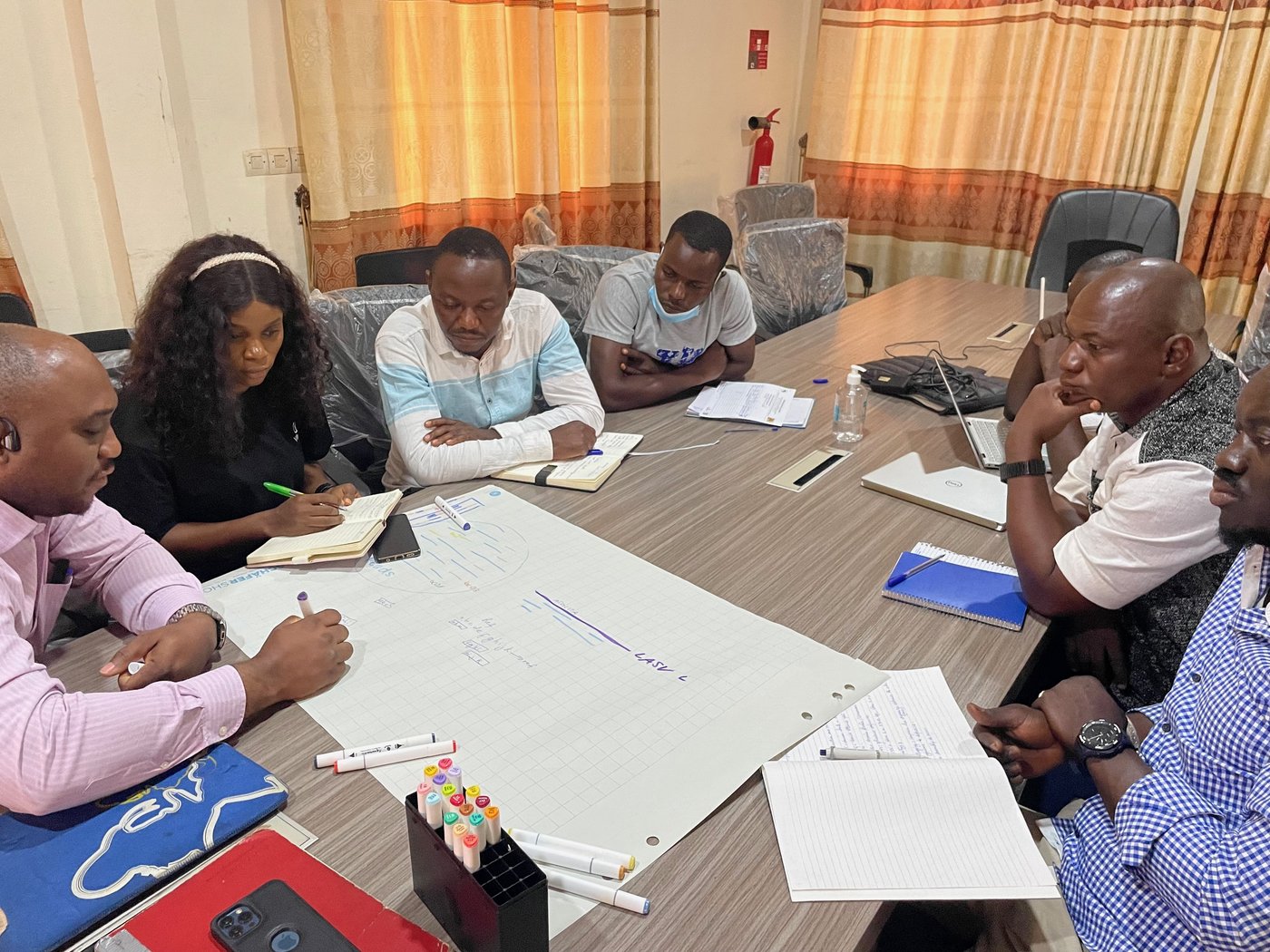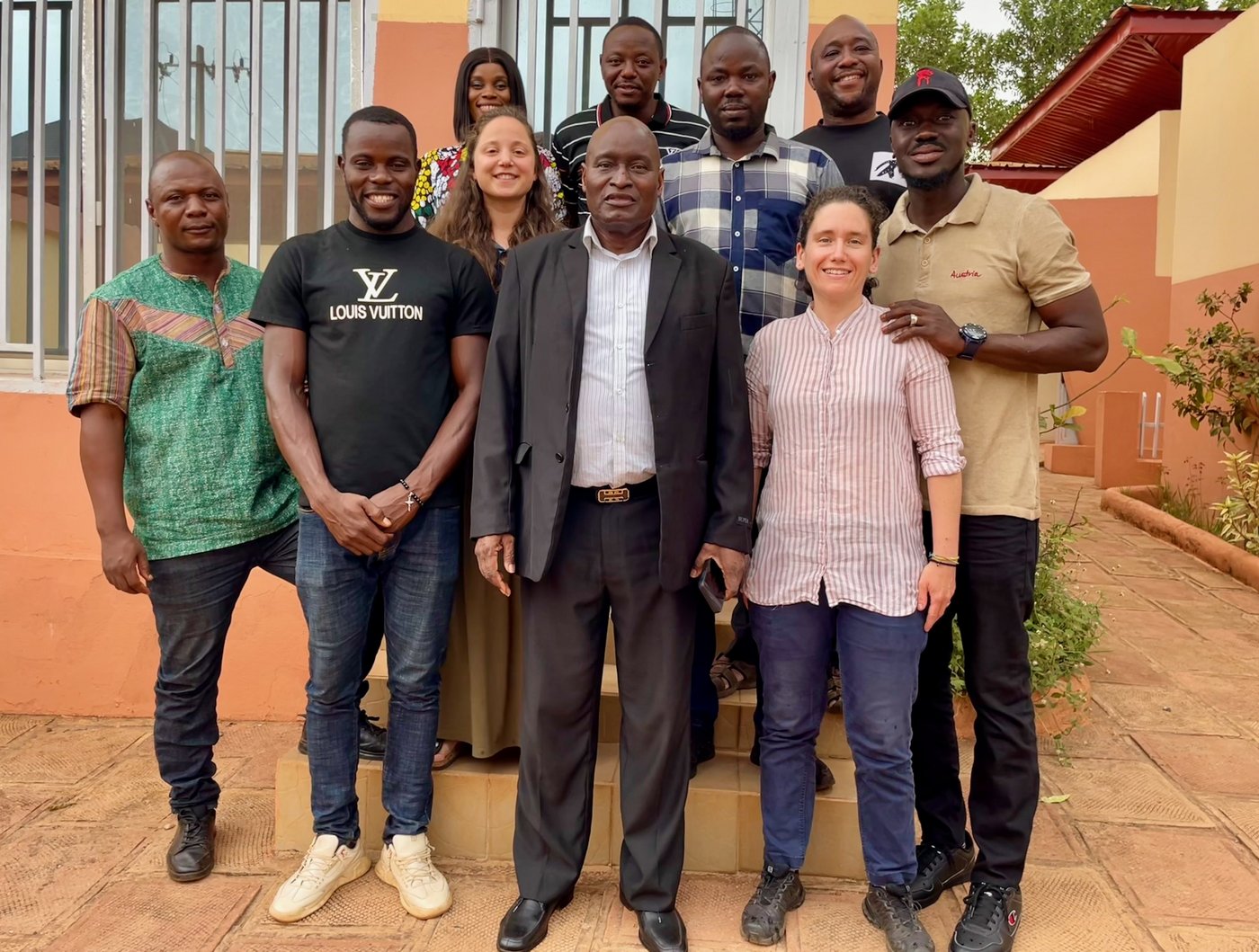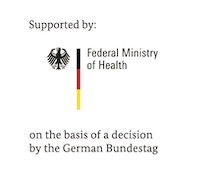New Pipeline "ViMOP"
Enhanced Global Nanopore Virus Genomic Surveillance Capabilities
The new bioinformatics pipeline "ViMOP" has been successfully launched in Conakry, Guinea. It is designed to analyse untargeted nanopore sequencing data for the use in the field or remote settings by personnel without much prior knowledge of bioinformatics. Seven lab staff members from three laboratories, supported by the German Health Protection Programme (GHPP) CELESTA, participated in the launch and training session, marking a significant step forward in strengthening the region's capacity to monitor infectious diseases through advanced genomic analysis.

The one week intensive training took place at the Centre de Recherche en Virologie (CRV) within the CELESTA collaborative network of leading partner institutions from West Africa, namely the Irrua Specialist Teaching Hospital (ISTH, Nigeria), the Viral Hemorrhagic Fever Laboratory of Gueckédou (LFHV-GKD, Guinea), and the Centre de Recherche en Virologie (CRV-LFVHG); all of them playing pivotal roles in Viral Hemorrhagic Fevers (VHFs) monitoring and response in the region.
The workshop was centered around the launch of "ViMOP", a cutting-edge bioinformatics tool developed by the Outbreak Preparedness and Response (OPR) team at Bernhard Nocht Institute for Tropical Medicine (BNITM), led by Dr Duraffour. ViMOP, short for "Virus Metagenomics Outbreak Pipeline", is designed to streamline the analysis of complex viruses involved in disease outbreaks. Developed by a multidisciplinary bioinformatics team from Germany, Belgium, Nigeria and Guinea, ViMOP integrates portability, simplicity, and analytical depth into untargeted MinION nanopore sequencing workflows (Nanopore Oxford Technologies). In addition to the successful setup in Guinea and Nigeria, the public sharing of ViMOP enables global access to enhance viral genomic surveillance, directly contributing to public health interventions where needed.

The training, which was led by experts from BNITM OPR team, provided the GHPP-CELESTA lab staff with the knowledge and hands-on experience required to utilise the tool effectively. Participants learned how to independently setup and operate ViMOP to analyse metagenomic datasets, interpret results, and integrate these findings into actionable insights for disease monitoring and control.
Dr Nils Petersen, the lead bioinformatician from the OPR team, commented: “ViMOP was developed through a collaborative effort to address the unique needs of laboratories operating in resource-limited settings. Designed with simplicity and reliability in mind, the pipeline enables effective virus surveillance by delivering clear results to support timely decision-making, while ensuring easy setup, maintenance, and operation.”

The GHPP-CELESTA programme has long been committed to improving laboratory and sequencing capabilities in West Africa. With new tools like ViMOP, the programme fully aligns with the recent World Health Assembly Pandemic Agreement strengthening genomic surveillance, helping with the rapid detection and monitoring of viral pathogens.
About GHPP-CELESTA Programme
The GHPP CELESTA programme is a collaborative initiative that focuses on strengthening health systems in Guinea and Nigeria by enhancing laboratory capacity, improving genomic surveillance, and supporting the training of local laboratories staff.
About the Centre de Recherche en Virologie (CRV)
CRV is a public scientific institution under Guinea's Ministry of Higher Education, Scientific Research, and Innovation. Led by Prof. Sanaba Boumbaly, it focuses on research into viral hemorrhagic fevers (VHF) and other viral diseases, serving as a reference center for monitoring epidemic-prone infections. The CRV also trains master's students, PhD candidates and laboratory technicians. Its priority research areas include VHFs, epidemic-potential viral diseases, and emerging zoonoses, with specific goals to study the prevalence of Marburg, Ebola, yellow fever, measles, and rubella.
About the Irrua Specialist Teaching Hospital (ISTH)
ISTH in Edo State has been a pivotal institution in Nigeria's battle against Lassa fever. Established in 2007, the Institute of Lassa Fever Research and Control (ILFRC) at ISTH has significantly advanced the country's response to the disease. In 2018, ISTH scientists contributed to a breakthrough in rapid portable genomic sequencing technology, enabling the identification of viruses without prior knowledge of the disease's cause. Through continuous research, training and community engagement, ISTH remains a critical hub in the fight against Lassa fever, aiming to reduce morbidity and mortality associated with the disease.
About the Viral Hemorrhagic Fever Laboratory of Gueckédou (LFHV-GKD)
Operational since 2016, LFHV-GKD is led by Fara Raymond Koundouno and offers diagnostics services in the forest region of Guinea for VHFs and other viral pathogens with epidemic potential. Supported by the BNITM through the German Ministry of Health, the lab also manages various research programmes.
About the Evolutionary and Computational Virology (ECV) KU Leuven
The ECV group at KU Leuven has extensive expertise in generating sequencing data using MinION technology, studying evolutionary processes that shape viral genetic diversity and the relationship between viral evolution and disease progression. The ECV team has developed widely-used software tools such as SPREAD and contributed to popular tools including BEAST and BEAGLE which are of relevance for our genomic surveillance platform implementation.
About the Bernhard Nocht Institute for Tropical Medicine (BNITM)
The Bernhard Nocht Institute for Tropical Medicine (BNITM) is Germany's largest institution for research, care and teaching in the field of tropical and emerging infectious diseases. Current thematic priorities include malaria, haemorrhagic fever viruses, neglected tropical diseases (NTDs), immunology, epidemiology and the clinical care of tropical infections, as well as the mechanisms of virus transmission by mosquitoes. The institute has a number of high containment laboratories including Biosafety Level 4 (BSL-4) and a multiple level 3 labs (BSL-3), including a BSL-3 insectary, for handling highly pathogenic viruses and infected insects. BNITM supports the development of laboratory capacities, including mobile laboratories, in numerous countries worldwide, particularly in the Global South.
Downloads
Contact person
Dr Sophie Duraffour
Research Group Leader
Fax : +49 40 285380-941
Email : duraffour@bnitm.de
Julia Rauner
Public Relations
Phone : +49 40 285380-264
Email : presse@bnitm.de
Further information






